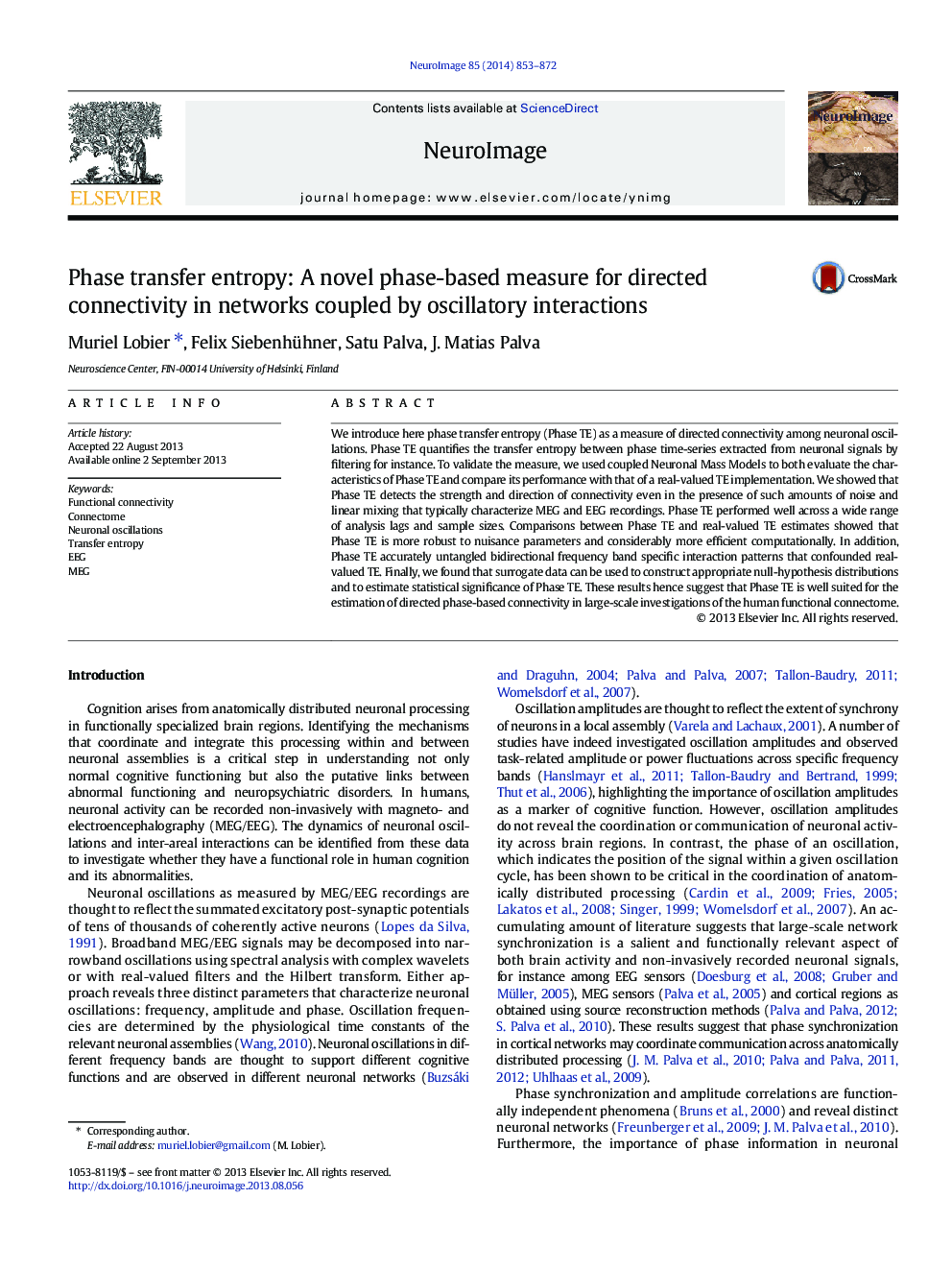| Article ID | Journal | Published Year | Pages | File Type |
|---|---|---|---|---|
| 6028383 | NeuroImage | 2014 | 20 Pages |
â¢Phase TE is a measure of directed coupling strength.â¢Phase TE is robust to realistic amounts of noise and mixing.â¢Phase TE is more robust and computationally efficient than real-valued TE.â¢Phase TE detects frequency band and direction of complex directed interactions.
We introduce here phase transfer entropy (Phase TE) as a measure of directed connectivity among neuronal oscillations. Phase TE quantifies the transfer entropy between phase time-series extracted from neuronal signals by filtering for instance. To validate the measure, we used coupled Neuronal Mass Models to both evaluate the characteristics of Phase TE and compare its performance with that of a real-valued TE implementation. We showed that Phase TE detects the strength and direction of connectivity even in the presence of such amounts of noise and linear mixing that typically characterize MEG and EEG recordings. Phase TE performed well across a wide range of analysis lags and sample sizes. Comparisons between Phase TE and real-valued TE estimates showed that Phase TE is more robust to nuisance parameters and considerably more efficient computationally. In addition, Phase TE accurately untangled bidirectional frequency band specific interaction patterns that confounded real-valued TE. Finally, we found that surrogate data can be used to construct appropriate null-hypothesis distributions and to estimate statistical significance of Phase TE. These results hence suggest that Phase TE is well suited for the estimation of directed phase-based connectivity in large-scale investigations of the human functional connectome.
